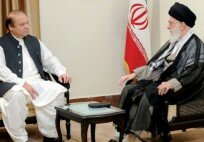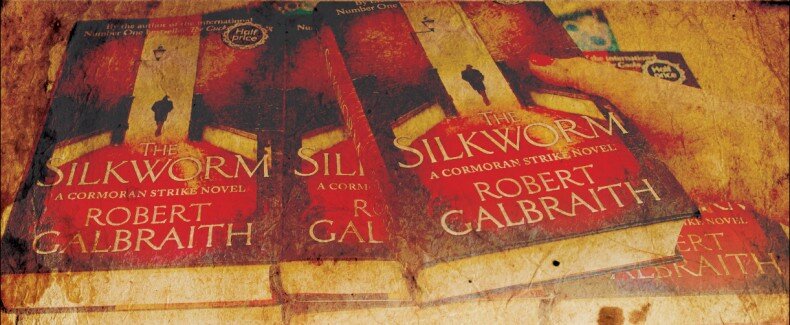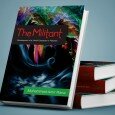By Rabia Ahmed –
Following on ‘Cuckoo’s Calling’, the first book in the Cormoran Strike series by J K Rowling aka Robert Galbraith is ‘The Silkworm’, so called because it is English for ‘Bombyx Mori,’ which in turn is the name of a novel written by Quine, one of the characters in the book, the plot of which has a bearing on the story. A Bombyx Mori is the larva of a silk moth cultivated for the silk of the cocoon it spins. The larva must be destroyed before it becomes a pupa, or the silk is ruined by a chemical the pupa secretes.
I mentioned, when I reviewed Cuckoo’s Calling a year ago, that to pass the acid test Galbraith/Rowling must exorcise the ghost of Harry Potter. Well, Cormoran Strike, the private investigator central to this series, a flawed hero carrying over two stone of excess weight now stands with both feet firmly planted on the ground, which is quite an achievement since he’s missing a leg below the knee.
Having said that it’s worth noting that half the characters in this book, all writers or publishers, would be quite at home in Knockturn Alley, a street in Potter’s London devoted to the Dark Arts.
Strike is not a great reader, or a man who has patience with celebrities, but after being hired to investigate the disappearance of Owen Quine the writer, he finds himself breathing the rarefied air of celebrities belonging to writing circles. Most of these people appear in some shape or form in Quine’s book: Leonara, Quine’s wife, as a demon, Quine’s girlfriend as a harpy, another friend as a slave to the harpy, and yet another as a parasitic woman who leeches off Quine; other people, all of them writers or publishers, feature as trolls, murderers, and torturers… which explains the observation regarding Knockturn Alley and makes you wonder if Rowling’s relationship with her publishers has been entirely amicable.
The characters are drawn with Rowling’s usual attention to detail from the forlorn Leonora, to the overbearing author Kathryn Kent who specialises in erotica, to Robin, Strike’s assistant who aspires to become an investigator herself. Strike, a meticulous man, has his emotions and experiences with his ex fiancée, his famous father, family and friends explored with ruthless accuracy. Strike wouldn’t like that if he knew it. He is the man on your bus ‘scowling, effortlessly and silently repelling anyone who might consider sitting on the seat beside him’… an endearing man in spite of that, and he would hate to hear that too.
Rowling’s disdain for the privileged classes comes through in this book as in her others, in for example her description of Strike and Robin’s visit to the home of Daniel Chard, a massive oblong, skeletal house without walls, constructed entirely of glass and metal, and the description of Chard’s manners. Chard is the president of Roper Chard, a London publishing house specialising in modern literature.
Her empathy for the less fortunate is also obvious. It is a trait that Strike shares, taking on Leonora’s case as he did with little regard for payment, the chance of which appeared slim at the time.
Rowling is still too descriptive. There are times when you wonder if a particular detail has any bearing on the story, and if not why it’s mentioned so carefully. She misses nothing, not even a cat walking on the edge of a balcony; the cat actually reappears, very briefly and is acknowledged as ‘the same cat’ at another visit to the same house. On the flip side if she did not visualise her stories in such minute detail she could never have given us this new series with its intricate twists of plot and subplot. Unlike with some other writers these descriptions are only sometimes irksome. Because of them London comes alive, a London that Rowling obviously knows very well, both its underbelly and its supercilious side.
All told, my only real problem with this book is that it has left me feeling rather uneasy about publishers in general, which is unfair, it’ll go away, Pique. I’m hoping there’ll be another book in the series. I want to know what happens to Strike and to the other people in his life.
The writer is a journalist based in Lahore. She tweets @RabiaAhmed4































































































